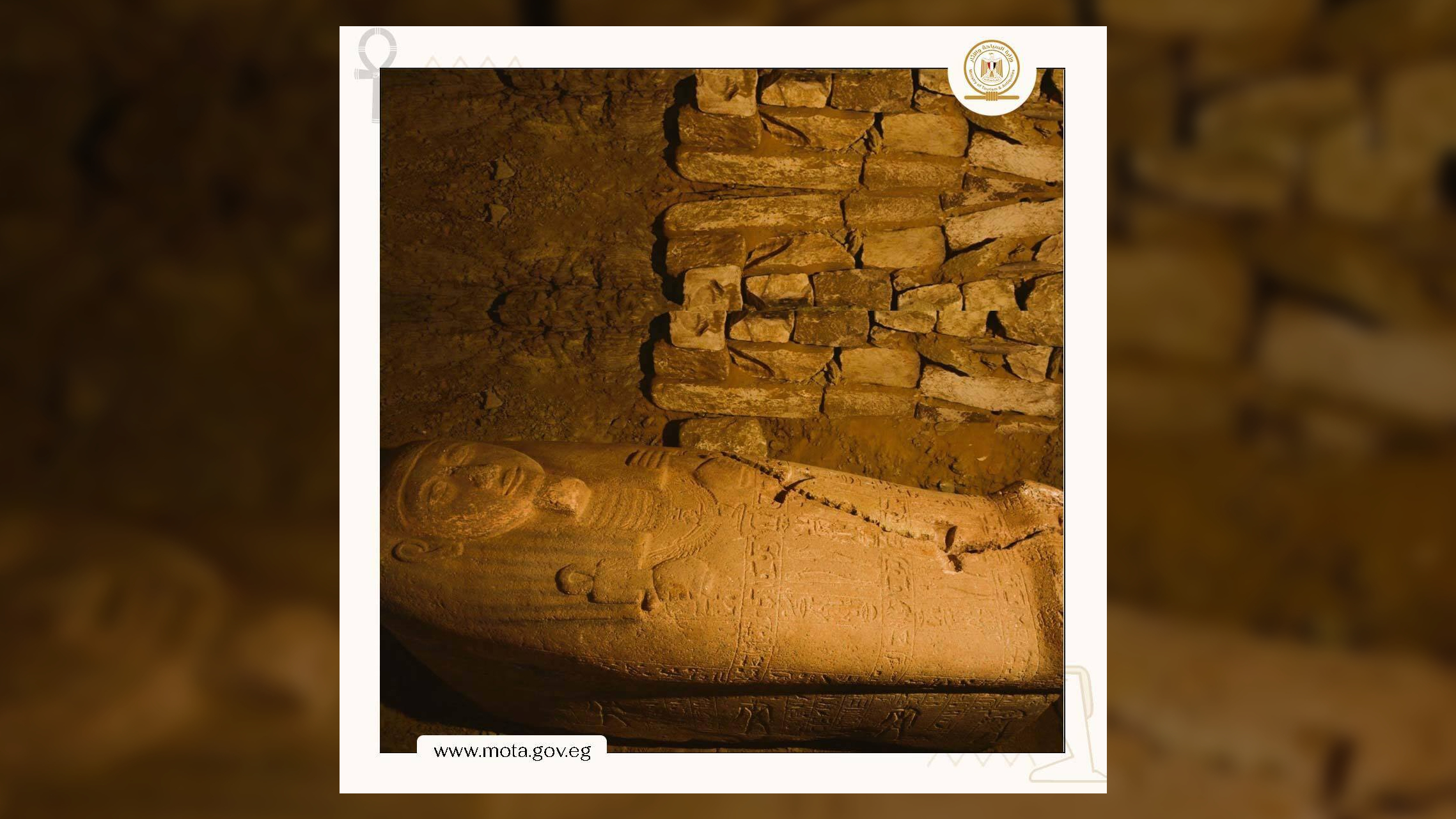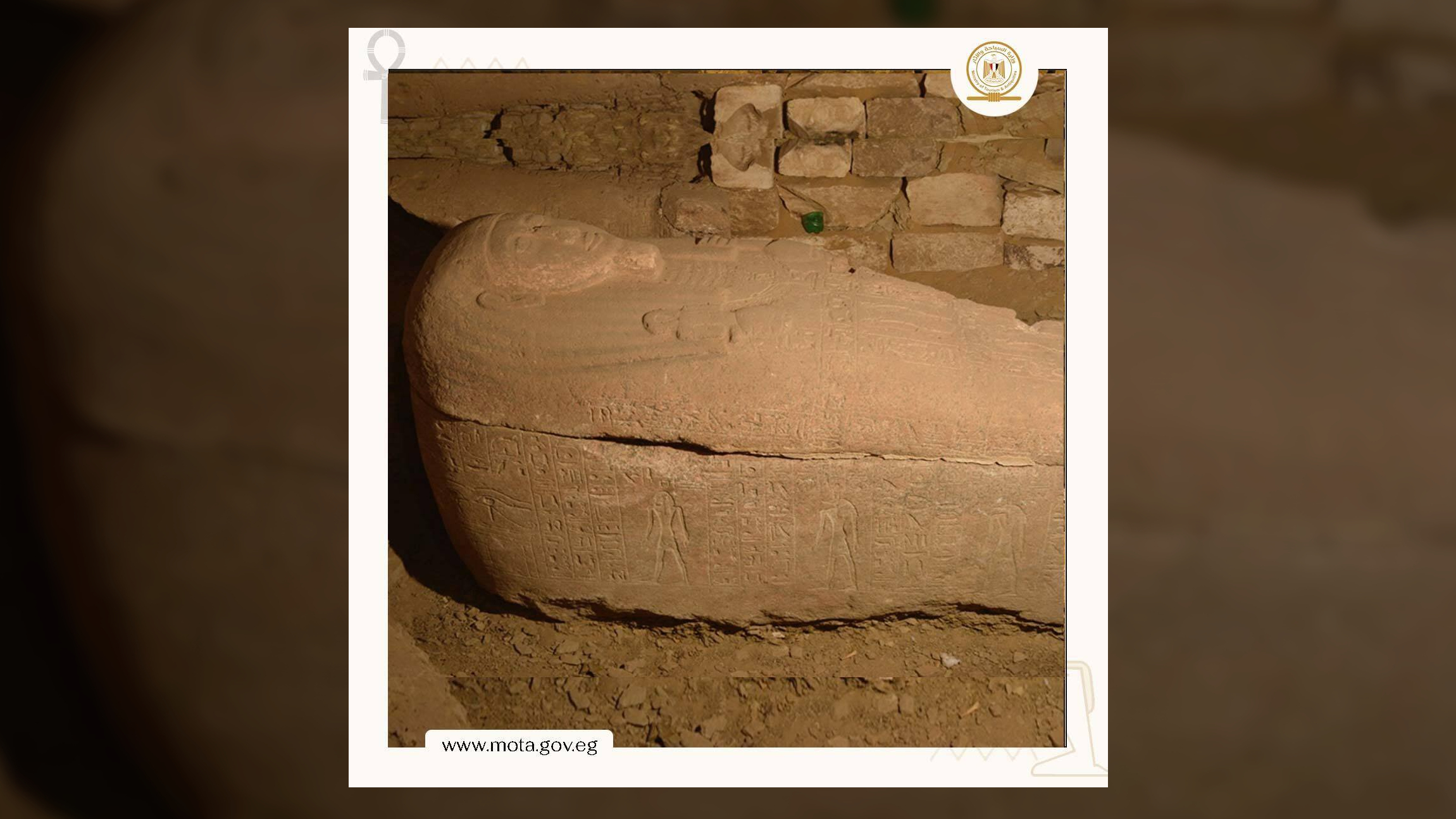3,300-year-old pink granite sarcophagus of Egyptian 'pyramid keeper' found at Saqqara
But he was buried by a different pyramid.

Archaeologists in Egypt have unearthed the 3,300-year-old stone sarcophagus of an official whose mummified body was stolen by grave robbers long ago.
The coffin, carved from pink granite, was crafted for an official named "Ptah-im-wea," who, according to the hieroglyphs inscribed on it, lived during the time of Ramesses II (reign circa 1279 B.C. to 1213 B.C.) and managed a temple that Ramesses II had built at Thebes (modern-day Luxor).
The hieroglyphic inscription said that Ptah-im-wea supervised the temple's livestock, was head of the temple's treasury and was responsible "for the divine offerings to all the gods," according to a translated statement from the Egyptian Ministry of Tourism and Antiquities.
Related: 7 famous mummies and secrets they've revealed about the ancient world
However, Ptah-im-wea wasn't buried near the temple he managed for Ramesses II. Instead, his coffin was placed beside a pyramid built 1,000 years earlier at Saqqara, an ancient city known for its vast necropolises.
Archaeologists discovered the sarcophagus near the pyramid of King Unas (reign circa 2353 B.C. to 2323 B.C.), south of a corridor where people ascended into the pyramid, the statement said. It was not unusual for people in ancient Egypt to want to be buried near pyramids constructed by pharaohs who lived in much earlier times, archaeological finds indicate. For instance, burials dating back around 2,500 years have been found near the Giza pyramids, which date to around 4,500 years ago, indicating that people may have considered the sites sacred long after they were built.
The coffin's hieroglyphs call for the protection of the deceased and have depictions of Horus, the falcon-headed god of the sky and son of the deities Osiris and Isis. Although the sarcophagus was robbed in antiquity, archaeologists found traces of resin that indicated a mummy had rested inside the coffin. The team didn't find any other artifacts with the coffin, according to the statement.
Get the world’s most fascinating discoveries delivered straight to your inbox.
Ramesses II ruled Egypt at a time when its empire extended from modern-day Syria to modern-day Sudan. The coffin was found by an archaeological mission led by Ola El Aguizy, an Egyptology professor at Cairo University.
Originally published on Live Science.

Owen Jarus is a regular contributor to Live Science who writes about archaeology and humans' past. He has also written for The Independent (UK), The Canadian Press (CP) and The Associated Press (AP), among others. Owen has a bachelor of arts degree from the University of Toronto and a journalism degree from Ryerson University.



